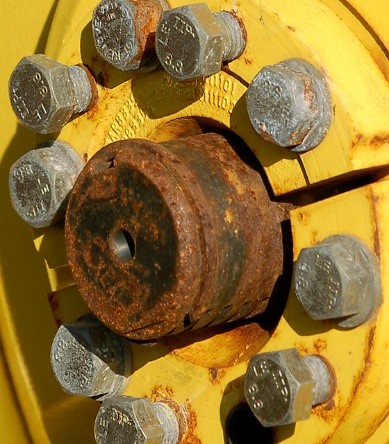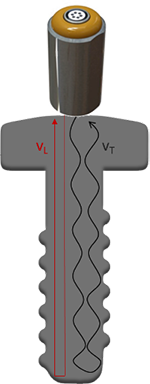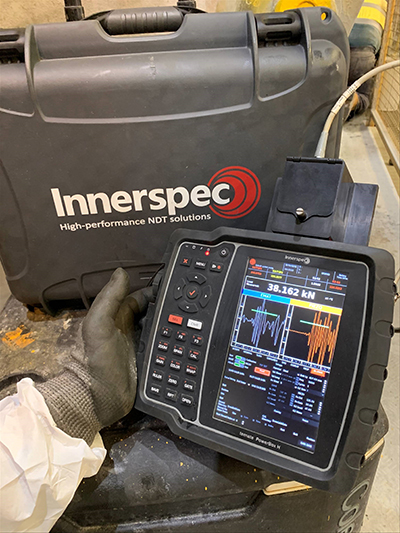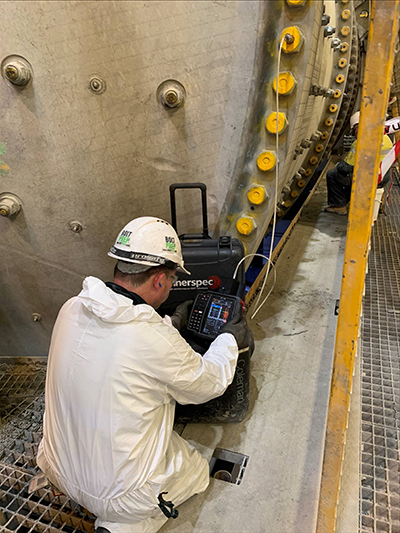EMAT Testing
BOLT-IN: Bolt-load in-service inspection and monitoring through novel non-destructive testing technologies
Published on 11th June 2021

Problem Addressed
Bolts and screws are one of the most common joining techniques, being able to attach any two materials, even if they are different. Bolts are used in most critical and demanding industries, including infrastructure, power generation, oil & gas, petrochemical, mining, construction, transportation and so forth.

Bolts are stress concentrators that can bring down the whole structure if not properly installed and maintained. In certain sectors, due to the sheer number of bolts and/or difficult access, inspecting these bolts is dangerous, costly and time consuming.
As traditional Torque Wrenches, provide at best a ± 20-25% uncertainty, making this technology very unreliable, Ultrasonic Bolt Load Verification (UBLV) has become the industry standard for bolt load evaluation. UBLV methods operate taking a baseline reading of a fastener in its loose state, the fastener is then tightened and measured again. By comparing the difference between time of flights, and using the average cross-sectional stressed area and the materials velocity and elasticity modules, the applied load can be calculated. The main issue here is that there exist facilities without this reference measurement and therefore, in these cases, bolts should be dismounted, which is simply not feasible as the regulation demands that every loosen bolt must be replaced.
Innerspec’s solution: BOLT-IN
Innerspec has developed a novel dual-wave solution which combines EMAT (Electro Magnetic Acoustic Transducers) with DCUT (Dry-Coupled Ultrasonic Technology) allowing to know bolt load levels on new and in-service bolts.
Innerspec’s approach is to measure both ultrasonic times of flight to study changes in bolt elongation without knowing the original length. This, therefore, erases the need to disassemble them.


In addition to this unique differentiator, unlike conventional piezoelectric crystals, EMAT and DCUT require no liquid couplant, providing key technical advantages such as erasing the need of preparing the surface of the materials under investigation, saving critical inspection time.
This solution can already be used with Innerspec POWERBOX H system, our hand-held, battery operated instrument able to achieve 98% of accuracy. This device can tackle different non-destructive testing applications targeting several industries, meaning that with one single instrument, different NDT applications such as residual stress measurement, thickness measurement, surface and/or volumetric inspection can be performed.

Success story
During BOLT-IN project, the dual-wave approach has been validated by conducting several trials in the laboratory as well as in real environments. BoltPrep, an Australian inspection company specialized in critical bolts inspection have been the main subcontractor in this project. They have tested BOLT-IN technology at their customers’ facilities achieving promising results, leading to a smooth penetration of this novel technology into the Australian market.
BoltPrep’s customers have already enjoyed the advantages of Innerspec’s dual-wave approach to assess bolt load (no couplant needed, 98% accuracy, repeatability, reliability, inspection speed, no need to dismount bolts, etc.) and are ready to keep exploring BOLT-IN’s virtues.

BoltPrep is the first inspection company in Australia using this unique technology, guaranteeing a full assessment of in-service bolts in critical assets in the oil&gas and mining industries.
This project has received funding from the European Union’s Horizon 2020 research and innovation programme under grant agreement nº 2020-1266 INNOWWIDE - BOLT-IN. This document reflects only the author’s view and the Commission is not responsible for any use that may be made of the information it contains
Source: https://www.innerspec.com/case-studies/bolt-in-bolt-load-in-service-inspection








